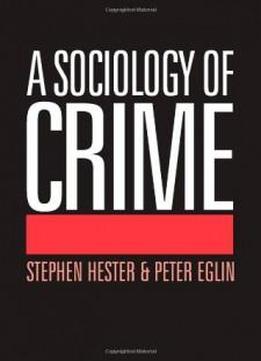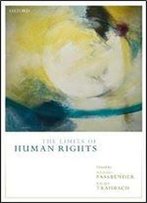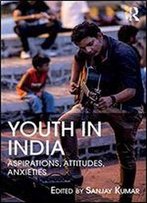
A Sociology Of Crime
by Stephen Hester /
1992 / English / PDF
13.8 MB Download
Designed as an alternative to conventional texts on criminology, "A
Sociology of Crime" departs from the traditional concern with
criminal behaviour and its causes to emphasize the socially
constructed nature of crime. Taking a perspective from radical
sociology, Stephen Hester and Peter Elgin argue that crime is a
product of social processes which identify certain acts and persons
as criminal. In their exploration of this theme, Hester and Elgin
use three leading approaches in contemporary sociological theory -
ethnomethodology, symbolic interactionism, and structural conflict
theory. They apply each of these methods to a detailed study of the
anatomy of crime, at the same time reviewing other main
criminological perspectives on both sides of the Atlantic,
including the feminist one. They focus on three main topics: making
crime by making criminal law; making crime by enforcing criminal
law; and making crime by the administration of criminal justice in
the courts. International in outlook, "A Sociology of Crime"
contains material from the USA, Britain and Canada which is closely
linked to the theoretical approaches discussed. This book should be
of interest to undergraduates and postgraduates in criminology and
sociology.
Designed as an alternative to conventional texts on criminology, "A
Sociology of Crime" departs from the traditional concern with
criminal behaviour and its causes to emphasize the socially
constructed nature of crime. Taking a perspective from radical
sociology, Stephen Hester and Peter Elgin argue that crime is a
product of social processes which identify certain acts and persons
as criminal. In their exploration of this theme, Hester and Elgin
use three leading approaches in contemporary sociological theory -
ethnomethodology, symbolic interactionism, and structural conflict
theory. They apply each of these methods to a detailed study of the
anatomy of crime, at the same time reviewing other main
criminological perspectives on both sides of the Atlantic,
including the feminist one. They focus on three main topics: making
crime by making criminal law; making crime by enforcing criminal
law; and making crime by the administration of criminal justice in
the courts. International in outlook, "A Sociology of Crime"
contains material from the USA, Britain and Canada which is closely
linked to the theoretical approaches discussed. This book should be
of interest to undergraduates and postgraduates in criminology and
sociology.











